Mission to Cuba unsettling, yet encouraging
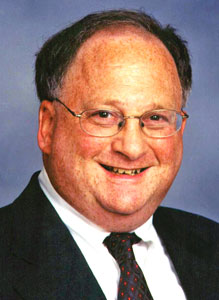 I went to Cuba in December, representing Kansas City B’nai B’rith Lodge #184, along with Rabbi Jacques Cukierkorn. We joined 17 others on the six-day mission, sponsored by B’nai B’rith International, touring the Jewish communities of Santiago, Guantanamo and Havana. It was a wonderful experience.
I went to Cuba in December, representing Kansas City B’nai B’rith Lodge #184, along with Rabbi Jacques Cukierkorn. We joined 17 others on the six-day mission, sponsored by B’nai B’rith International, touring the Jewish communities of Santiago, Guantanamo and Havana. It was a wonderful experience.
We witnessed and were able to participate in the resurgence of Judaism in Cuba. The Jewish community of Cuba has been surviving in the face of many challenges since the revolution in 1959. It has adapted to survive. For example, to meet the requirements for a minyan woman have been accepted as part of it. In deciding on membership for congregations, patrilineal descent is accepted as well as matrilineal descent. A renaissance is occurring with respect to developing new prayer books.
The communities outside of Havana are rarely visited, so we spent the first two days of the mission in Santiago, which is the second largest city in Cuba. Santiago was also the point at which Hurricane Sandy made groundfall as it swept across eastern Cuba in October. Less than two months later, some evidence of up-rooted trees and damaged homes was still apparent. We saw that the community was functioning well, except for an outbreak of cholera that was still of concern because of hurricane-damaged municipal water supplies.
While Cuba has a total Jewish population of approximately 1,500, about 75 Jews live in Santiago and are members of the synagogue. About half of the Cuban Jewish community are descendants of Turkish Jews who immigrated in the 1920s. The other half of the community are descendants of Polish Jews.
The synagogue in Santiago has two Torah scrolls. One is the “Ashkanazi” Torah and the other is a “Sefardi” Torah. The Sefardi Torah needed repair a few years ago. The Jewish community of Argentina stepped in to repair it on the specific condition that women stay at the rear of the room whenever the Sefardi Torah is opened.
We were in Guantanamo on Saturday. When Rabbi Cukierkorn led the Sabbath service there, it was the first one led by a rabbi in the history of the synagogue. Cuba has not had a resident rabbi in the entire country since the exodus of most of the Jewish residents following the revolution.
There are approximately 40 Jews in Guantanamo. Practically all of them are part of the extended Mizrachi family. Almost the entire congregation attended services to meet the B’nai Brith group. As the Mission was getting off of the tour bus on arrival the president of the community, Rudolfo Mizrachi, was vigilant in advancing the plea of the community. He asked for $1,300 so that the synagogue could acquire chairs and an awning for the patio on which the synagogue has most of its events other than worship. It turned out that the chairs being used were thin, flimsy toy plastic chairs. The request should be viewed in perspective: the average wage throughout Cuba is $40 per month. The average wage for doctors is $50 per month. Basic food such as meat, rice and cooking oil is strictly rationed and is not always available.
In Havana, our mission participants learned that the Cuban government has given tentative approval for 45 Jewish students to represent Cuba in the Maccabean games in Israel this summer. B’nai B’rith plans to assist the Patronato, which is the organization that organizes the Jewish community of Havana, obtain the proper athletic gear for the Cuban athletes. Overall the Patronato has to raise more than $125,000 for the athletes to be able to travel to Israel.
Throughout our mission, the spirit of nationalism and the secularism of Cuba was evident. We saw an abundance of signs and banners with slogans such as “Venceremos,” (“We Shall Overcome,”) “La Patria o Muerte,” (“The Motherland or Death”) and “Free the Miami Five” (five Cuban spies convicted of conspiracy in Miami).
Yet we could also see that Judaism is vibrant and developing in Cuba. The consensus among the group was that Cuba has very little anti-Semitism.
The people we met were eager to get everything they could in terms of aid. B’nai B’rith Lodge #184 donated 100 copies of Rabbi Cukierkorn’s book “La Guia,” which covers Jewish ritual and customs and is written in Spanish. The books were enthusiastically received. Even though the Cuban Jewish community has Torah’s kipahs, talit and prayer books, they have no libraries.
While I was there, I learned that the Cuban Jewish community can conduct a fluent service from a prayer book, but they don’t have the skill set to read from the Torah. That worries me somewhat that Cuban Jews are in danger of losing such literary traditions and Judaic knowledge.
But good things have been happening as well. B’nai B’rith has been sending medical supplies to Cuba since 1995. In addition to the books, members of the mission contributed prescription and over-the-counter drugs, canned food and adult diapers to alleviate some of the hardships caused by the economic embargo imposed on the communist country by the United States.
The Jewish community in Cuba has been isolated for 50 years. As the embargo and religious restrictions imposed a half century ago are being eased, there is a window of opportunity to provide resources to help. B’nai B’rith has been developing an effective program to deliver resources so that Judaism can continue to flourish in Cuba. I’m proud to be a member of B’nai B’rith and to be able to help Jews in another part of the world, at least in some small way.



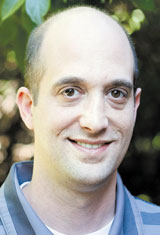 I believe it is important to think about what being Jewish means to all of us. When you think about that, whether you know it or not, you may think of the Jewish Federation of Greater Kansas City or one of the many programs it funds through its partner agencies.
I believe it is important to think about what being Jewish means to all of us. When you think about that, whether you know it or not, you may think of the Jewish Federation of Greater Kansas City or one of the many programs it funds through its partner agencies.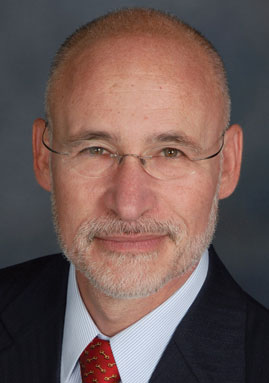 Tuesday, Jan. 22, was the anniversary of the Supreme Court decision, known as Roe v. Wade.
Tuesday, Jan. 22, was the anniversary of the Supreme Court decision, known as Roe v. Wade.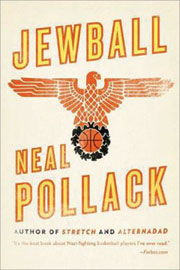 Author Neal Pollack has scored a slam dunk with his fast-paced novel “Jewball.”
Author Neal Pollack has scored a slam dunk with his fast-paced novel “Jewball.”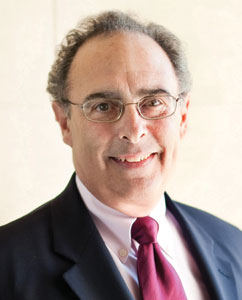 All of these arguments going on around me, arguments about whether we have the right to have guns, or whether guns kill people or people kill people, or whether gun control will save lives. And the arguments are hollow, devoid of the pathos of murder and death, empty of the moment between life and death, so empty of the blackness of staring into the oblivion, hearing the words, “I am sorry, but your child is dead.”
All of these arguments going on around me, arguments about whether we have the right to have guns, or whether guns kill people or people kill people, or whether gun control will save lives. And the arguments are hollow, devoid of the pathos of murder and death, empty of the moment between life and death, so empty of the blackness of staring into the oblivion, hearing the words, “I am sorry, but your child is dead.”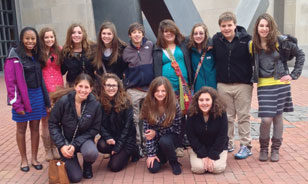 Going to the United States Holocaust Memorial Museum, even for only two days, was the most powerful trip we have ever taken. As soon as we stepped off the plane and put our bags in our hotel room we went straight to the Holocaust Museum, which was a very moving and unique experience. Just being in the museum before looking at any of the exhibits gave us a very unsettling feeling. The way the museum was built was purposeful and evoked a keen sense of sadness. Uneven stairwells, exposed ducts and little view to the outside from the museum were all design elements intended to make you feel as if you were in World War II era train station.
Going to the United States Holocaust Memorial Museum, even for only two days, was the most powerful trip we have ever taken. As soon as we stepped off the plane and put our bags in our hotel room we went straight to the Holocaust Museum, which was a very moving and unique experience. Just being in the museum before looking at any of the exhibits gave us a very unsettling feeling. The way the museum was built was purposeful and evoked a keen sense of sadness. Uneven stairwells, exposed ducts and little view to the outside from the museum were all design elements intended to make you feel as if you were in World War II era train station.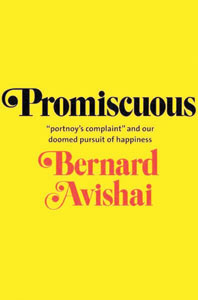 “Promiscuous: ‘Portnoy’s Complaint’ and Our Doomed Pursuit of Happiness,” by Bernard Avishai. (Yale University Press, 2012)
“Promiscuous: ‘Portnoy’s Complaint’ and Our Doomed Pursuit of Happiness,” by Bernard Avishai. (Yale University Press, 2012)